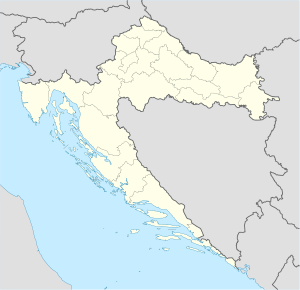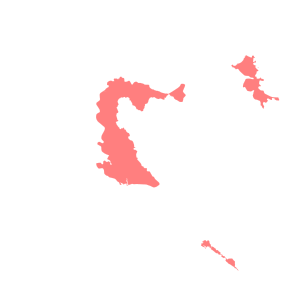| Operation Whirlwind | |||||||
|---|---|---|---|---|---|---|---|
| Part of the Croatian War of Independence | |||||||
Operation Whirlwind bridgehead on the map of Croatia. JNA-held area in late December 1991 are highlighted red. | |||||||
| |||||||
| Belligerents | |||||||
|
|
| ||||||
| Commanders and leaders | |||||||
|
|
| ||||||
| Strength | |||||||
| ~2,100 | ~1,500 | ||||||
| Casualties and losses | |||||||
|
18 killed 18 wounded |
20 killed 3 POW 1 missing | ||||||
Operation Whirlwind (Croatian: Operacija Vihor)[1] was a failed Croatian Army (HV) offensive in the Banovina region of Croatia, fought from 11–13 December 1991, during the early stages of the Croatian War of Independence. The offensive employed a single infantry brigade as the main attacking force, supported by a bridging unit and a handful of tanks and armoured personnel carriers. Although the offensive met hardly any resistance in its initial stage, achieving tactical surprise, the operation was poorly planned, supported and executed as a result of limited training and combat experience. The offensive established a short-lived bridgehead, evacuated in panic two days after the operation commenced, under tank and mortar fire from the Yugoslav People's Army (JNA) deployed north of Glina.
The operation was criticised for its poor planning and execution, insufficient preparation, reconnaissance and training, and inappropriate command and control methods applied by the Sisak Operational Group in charge of the offensive. It also lacked clear objectives. Afterwards, Croatian military authorities investigated the offensive, but found that there was very little written documentation, including written unit-level orders, pertaining to the operation. That led Admiral Davor Domazet-Lošo to conclude that the offensive was not formally authorised. The formal investigation did not specifically charge anyone with the failures, simply specifying the problems observed instead.

